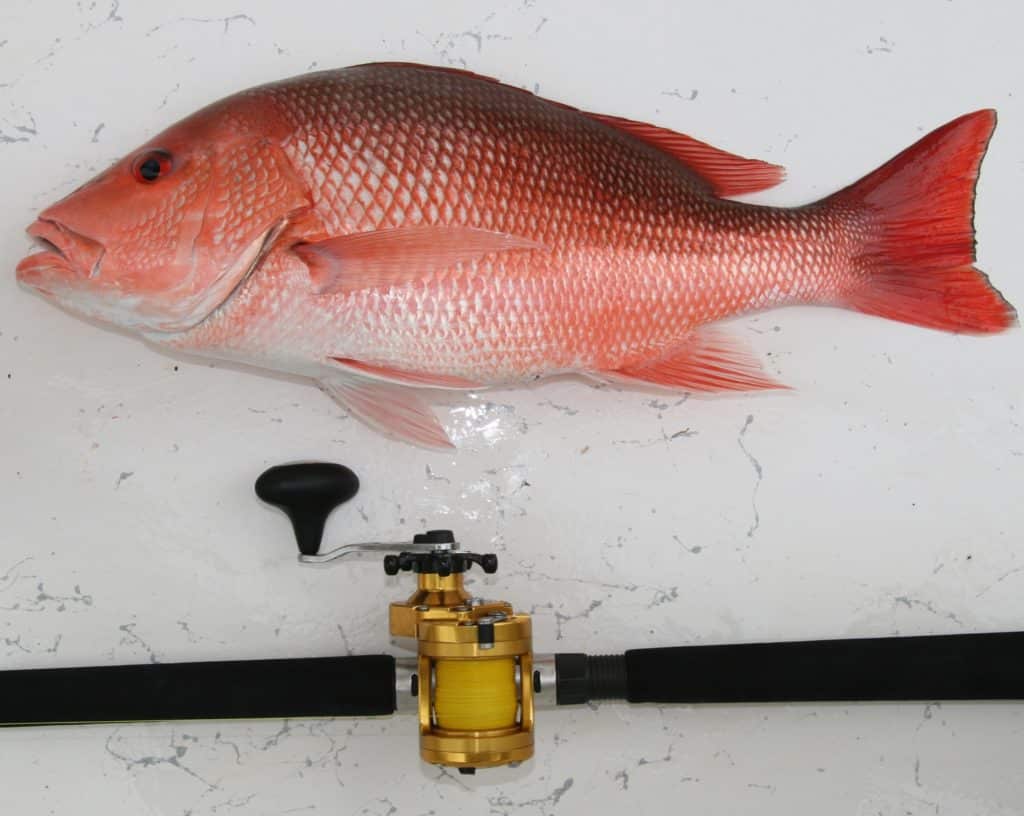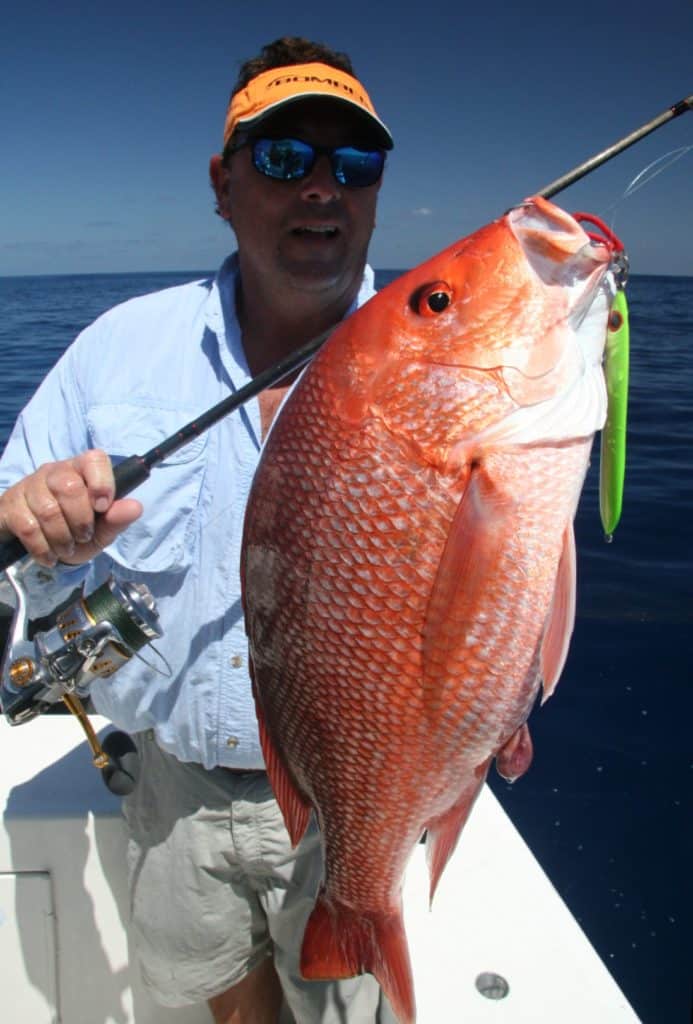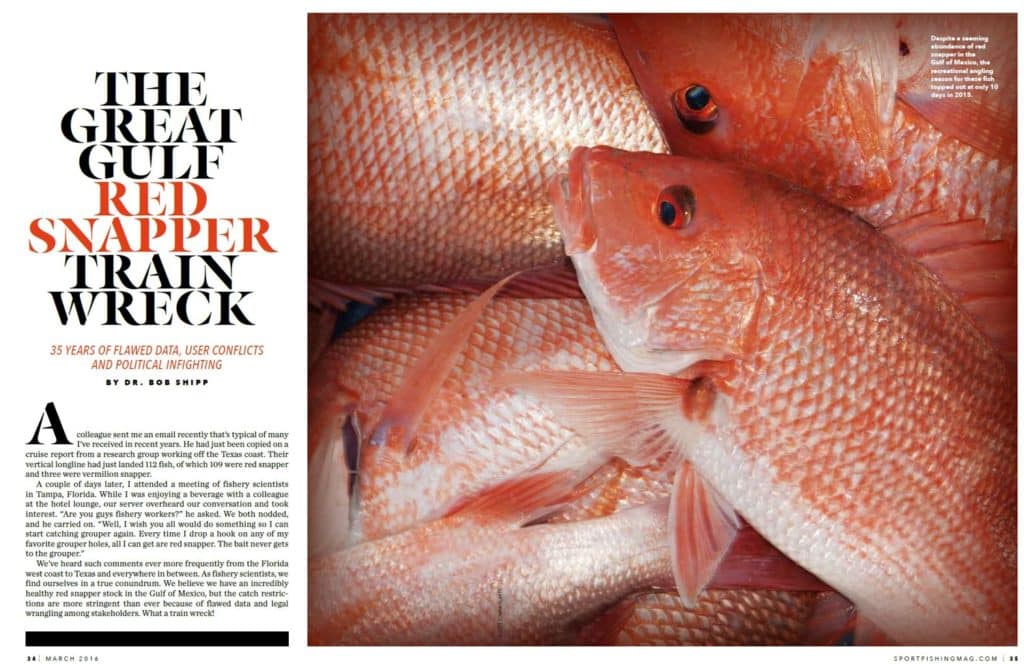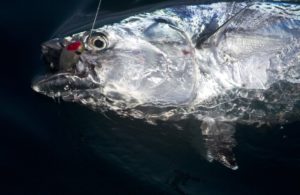
OPINION
Anglers who fish the Gulf of Mexico don’t much care for the way red snapper in the Gulf of Mexico are being managed. Okay, yes, that’s understating things: Most Gulf anglers would cite last year’s annual season giving them a whopping nine days to fish snapper in federal waters as an example of failed management.
There has to be a better way. (I’ve said so before, in an editorial in Sport Fishing magazine, in fact.)
But what is that better way (one that might actually work and be feasible)?
This was the very question that motivated a group of concerned representatives of the recreational-angling community to meet for many hours over 12 months last year.
As a news article on this site reports, that focus group’s conclusions will be officially shared with the Gulf of Mexico Fishery Management Council at its February meeting. It will offer seven strategies to manage Gulf red snapper for recreational angling. It will not, however, provide any recommendations, but rather an in-depth discussion of each option and a list of the advantages and disadvantages for each.
After looking at focus group’s report, i still think there have to be better ways to manage, but there are absolutely worse ways — worse for snapper, probably, and most definitely for anglers.
Seven ways per the report to manage red snapper for recreational anglers: Status quo, Maximizing fishing days within current framework, Harvest Tags, Depth/Distance-Based Management, Reef-Fish Season, Harvest Rate/Recruitment-Based Management, and Hybrid (incorporating two or more plans above).
It will be interesting to see what the Gulf Council does with this unprecedented report. One would hope it would consider the pros and cons of each and shy away from some ideas that seem particularly untenable.

For example, the harvest-tag option has been around for many years. It’s popular not with anglers but with some environmental interests who are heavily involved with promoting catch-share management. While that has worked well with specific, large commercial fisheries, no one has yet devised any way to implement catch shares for anglers that would be effective and acceptable. Harvest tags are, admittedly, one way to apply the catch-share concept to sport fishing, but in a way neither effective nor acceptable. Consider that, basing their conclusions on current data from NOAA, the focus group showed that not all anglers in the U.S. who might apply for a tag could be guaranteed with certainty of ending up with even one tag (allowing the legal retention of a single red snapper in a year) in a harvest-tag lottery. While the report does offers some pluses to the harvest-tag idea, the minuses (such as that just noted) should be enough to get the red snapper harvest-tag concept off the table and keep it off.

On the other hand, I hope the Gulf Council will take a close look at an idea actually proposed in 2016 by Bob Shipp, in the Sport Fishing article, “The Great Gulf Red Snapper Train Wreck” — that of depth/distance-based management. I think it’s fair to say that few exceed Shipp, a fisheries biologist (Ph.D.), Gulf fish/fisheries expert, avid angler and a member of the Gulf Council, when it comes to knowledge of red snapper. Shipp’s approach would set areas open for recreational fishing based on the depth or distance from shore. Beyond a certain depth (e.g. 150 feet) or a certain distance from shore (e.g. 20 miles), the waters would be closed to recreational red-snapper fishing. Inside that depth, red snapper fishing would be allowed, subject to bag/size/seasonal limits. In theory, this would provide an area for the species to thrive and replenish the shallower waters. And it could provide longer seasons for anglers.
Many in the rec-fishing community still insist that allowing the five Gulf states to manage red snapper makes the most sense.
There are many factors that could complicate this approach and many questions that would need to be answered to further consider the depth-based strategy.
In fact, the bottom line is that until NOAA is able to finally get the sort of reliable (and ideally near-real-time) data that it obtains from the commercial-fishing industry (which is intrinsically easier to monitor than recreational fishing), it’s going to be very difficult for federal managers to predict what any of these new strategies would actually mean.
Of course many in the rec-fishing community still insist that allowing the five Gulf states to manage red snapper makes the most sense. But legislation that would allow that (e.g. by Rep. Garret Graves, R-LA) faces a long and uphill struggle.
So we have to hope that the Gulf Council will give the reasoned and analytical Gulf Angler Focus Group Initiative the scrutiny and deliberation it merits, and find a path to managing red snapper with what we know has to be out there — a better way.








